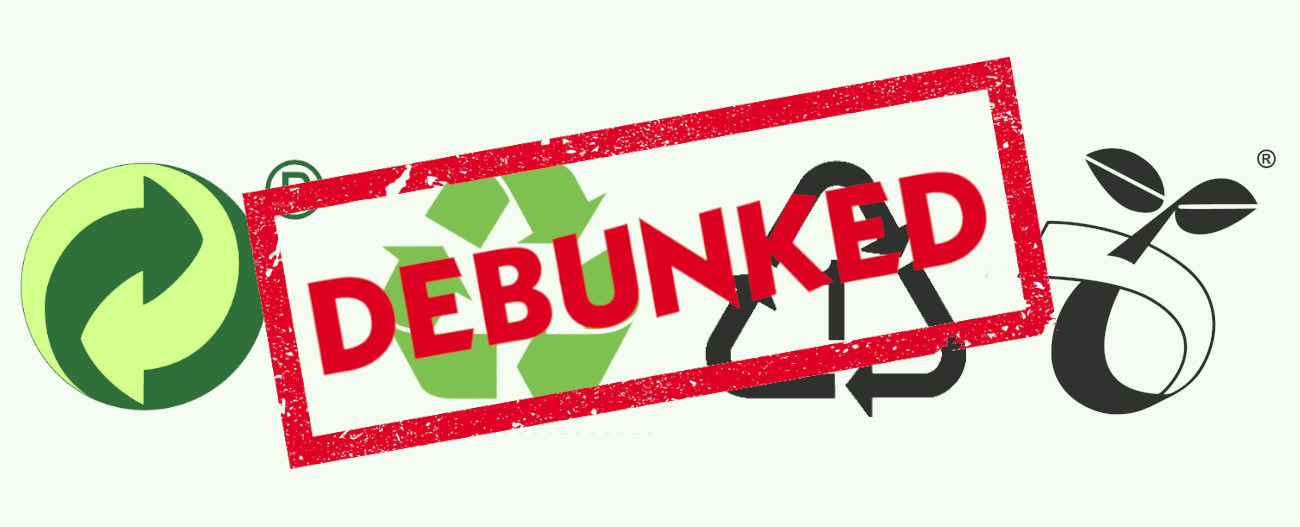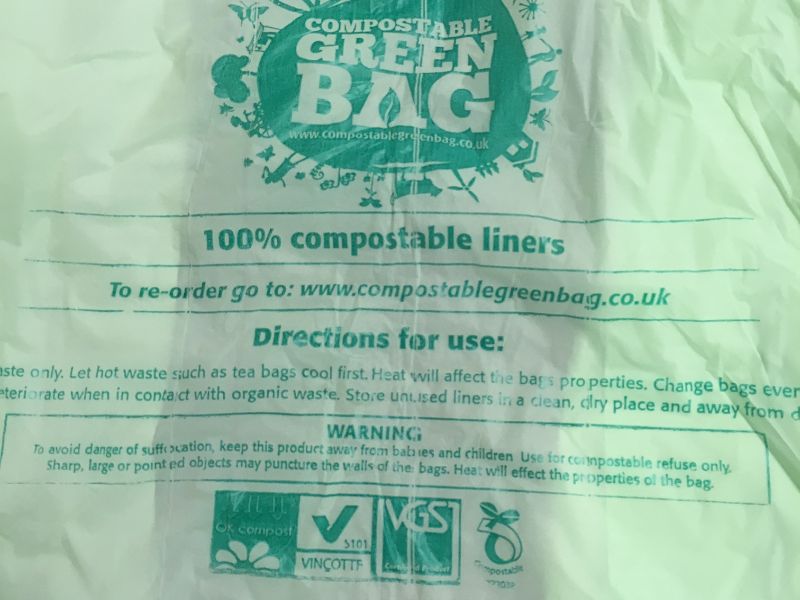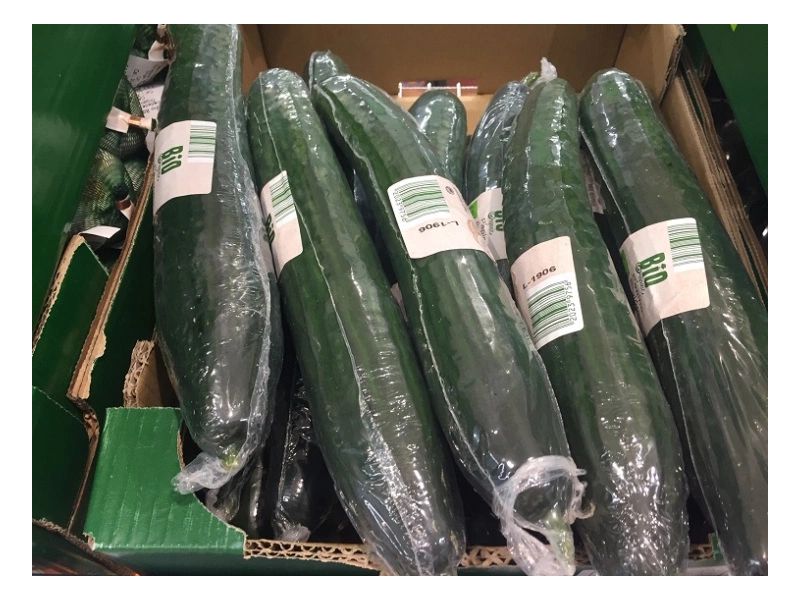This week is the start of Recycle Week, a recycling initiative organised by WRAP under the Recycle Now brand, that’s now in its 17th year. This year’s theme is ‘Recycling. It’s in our own hands’.
The aim of the week is to encourage everyone to recycle more, by helping to understand the benefits of recycling items from all around the home and by offering tips and suggestions to make it easier to recycle. There have been myths surrounding recycling for many years and this year, we’ve put together some facts to debunk a few of these myths!
Myth 1.
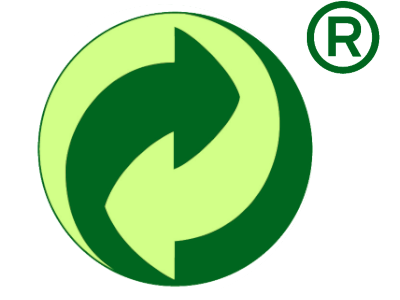
The green dot means it’s recyclable
The truth is the green dot symbol (while not always green) does not mean that the packaging is recyclable, will be recycled or has been recycled. It simply is a symbol used on packaging to signify that the company has financially contributed towards the recovery and recycling of the packaging in Europe.
Myth 2.

The triangle icon means that something is recyclable
Another logo on the back of many products is a different arrow symbol, this time in the shape of a triangle, it is named the Mobius Loop. It only indicates that the packaging is capable of being recycled, not that it has been recycled or will be accepted in all recycling collections. Sometimes this symbol is used with a percentage figure in the middle to show that the packaging contains that much-recycled material.
Myth 3.

The number inside the triangle is the number of times it has been recycled
Yet again, another triangle logo with arrows. This one is different from the Mobius Loop and is displayed to indicate the type of plastic resin used to make the packaging. In the UK, codes 1 and 2 are usually widely recyclable, resin code 3 is not typically collected from households. Resin code 4 is typically plastic bags that can be taken to supermarkets for reuse and recycling. Codes 5, 6 and 7 are harder to recycle.
So, bear in mind, when buying a product in plastic packaging look for codes 1 and 2 that are widely recyclable. For more information on any of these codes check out this link.
Myth 4.

Single-use products labelled ‘biodegradable’ or ‘compostable’ are a sustainable alternative to plastic
Products that are labelled with these ‘eco-friendly’ terms don’t explain that for these to be recycled, they require industrial processors to break them down. Most of these products do not break down naturally and end up polluting the environment. In the UK there are several industrial composting facilities that are capable of recycling this material but there are not enough and much of this material ends up in landfill or at an energy from waste facility.
Consumers mistakenly think that this material can be added to their food waste or garden compost to decompose, the reality is, this process will barely happen any quicker than normal plastic waste.
Industrial composters need to reach temperatures of around 60°C and they must allow enough moisture to support the micro-organisms which break down biodegradable products.
If these materials mistakenly end up in with food waste, it can actually contaminate the whole process as these aren’t dealt with in the same way.
Myth 5.
Wrapping fruit and vegetables is an unnecessary waste of plastic
While there are some examples of wrapped fruit that are unnecessary (the packaged peeled orange) sometimes it can be beneficial. Research shows that a shrink-wrapped cucumber lasts over three times longer than an unwrapped one. It also only loses 1.5% of its weight through evaporation after 14 days, compared with 3.5% in just three days for an exposed cucumber.
A longer life means fewer deliveries, and crucially, less waste.
There are many more myths that could be debunked but for now, we’ll leave it here. Just remember that not everything is always as it seems on the surface and to do some research. To read more about Recycle Week and to find out how you can get involved, check out the official website https://www.recyclenow.com/recycling-knowledge/recycle-week-campaign.
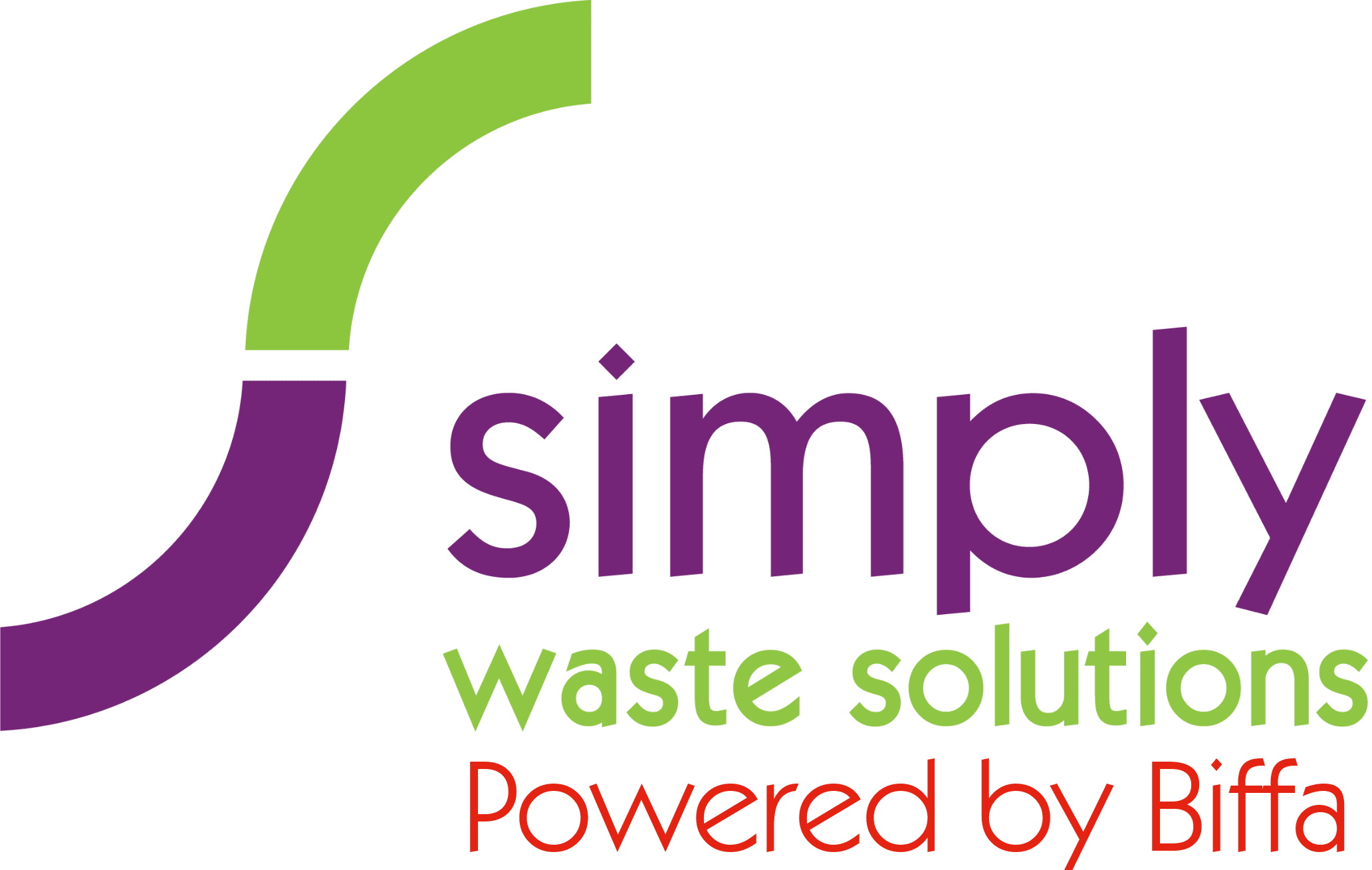
 Sales 03308 285 687
Sales 03308 285 687 